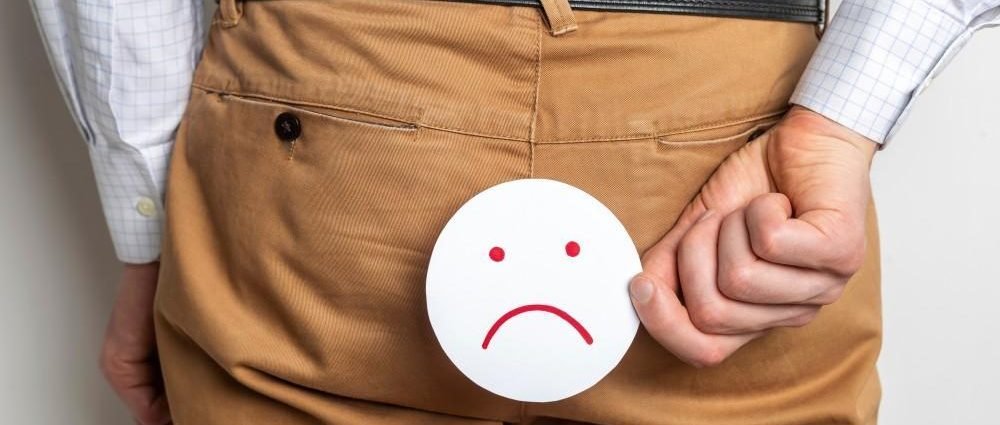Sitting down, going to the bathroom, and not being able to wear tighter clothes… are some of the limitations that suffer from hemorrhoids in your daily life. Also popularly known as lunch, they are very annoying inflammations that are located and developed in the anal area. This is a much more common problem than people recognize and think about. Half of the population would have been or are being treated for them. In many cases, they require surgery as the only way to solve. But what are the lunches? What causes the appearance of hemorrhoids?
The diversity of typology, evidence, and consequences have made them one of the black bees of the population: they can appear visible (on the outer edge of the anus), or be inside the anus (they appear between 2 and 4 cm above the opening of the anus). Your diagnosis, in most cases, requires only auscultation.
What Are Hemorrhoids?
Hemorrhoids or lunch are veins of the anal channel that inflame and dilate. In this process, they form a kind of valve in the area of the anal sphincters that remain closed at specific times when the area is under great pressure. They contain both blood vessels and tissues and fibers.
When the blood of these vessels clots, it acquires its bluish appearance and swells, causing pain to any friction. The lunches only bleed at the time this node of blood vessels and fibers breaks.
Its size and location can vary from person to person, and are classified as types according to the stage of development at which it is located:
Grade one implies that hemorrhoids don’t stand out
Grade two is that the lunches disappear alone
Grade three, by which hemorrhoids are manually reintroduced
Grade four, the permanent ones.
Generally speaking, as each case would have to be studied, degrees one and two hemorrhoids are treated with topical solutions, while grades three and four will require surgery.
Causes
Why do hemorrhoids appear? What makes a person suffer from lunch? The causes of this annoying and painful pathology are multiple. It has been linked to heart failure, constipation problems, and on the contrary, chronic diarrhea and even genetic elements.
So far, it is known that certain efforts involving the intestinal area have a direct cause-and-effect relationship. For example, take a lot of weight or childbirth, in the case of women. It also directly influences the type of diet you have (spices such as paprika or spices, exacerbate it), or lead a very sedentary life.
Symptoms of Hemorrhoids
The symptomatology of hemorrhoids is not serious but it is annoying. The person suffering from lunches is very likely to feel the presence of a hard and painful lump in the anal area, which will be visible or not depending on whether or not it is internal or external. When defecating, it is perceived as if the intestine is not prepared, and then signs of blood may appear in the stool and the anus, and may become painful.
Another of the symptoms associated with hemorrhoids is itching. In most cases, clotted blood does not form an infection, but the reaction of the body causes inflammation of the area and therefore a certain itching.
However, although this is a minor pathology, in some cases it can become a serious problem when intense anal bleeding occurs, the natural action of sphincters is infected or neutralized and symptoms of fecal incontinence appear. In the most serious cases, they can lead to the appearance of anal fistulas that open a new focus of infection for the sensitive area of the anus.
Hemorrhoid Phases
Hemorrhoids can develop in four phases, which correspond to the four degrees we have seen before.
In phase I, mild inflammation of the wall of the anus occurs, either internal or external. In the next phase, the lunch has grown inside the anus. They can get expelled when they defecate, but they show up again. In phase III of its development, we find prolapsed hemorrhoids, that is, out of the anus, and the person has the feeling that there is something – hung up – from the anus. When they reach level or phase IV they are large and cannot be expelled voluntarily, but require treatment.
Prevention
Is it possible to prevent the onset of hemorrhoids? Yes, even when genetics influence, certain lifestyle patterns help slow their onset and be milder. One of the first measures you can take has to do with diet: prioritize fluid intake and a more balanced diet, in addition to performing recurrent moderate exercise.
Treatment for Hemorrhoids
In most cases, hemorrhoids disappear on their own, without the need for specific treatment. However, when symptoms such as itching or recurrent stinging appear, several guidelines help significantly reduce the discomfort generated by lunches.
In the mildest cases, with a slight lifestyle change, increasing fiber consumption, and topical treatments combined with hot bathrooms, keeping the area clean, you will notice instant relief. When they appear in the form of a clot, it can be extracted, always by the physician, through an incision that helps drain it and relieve that pressure.
In these phases and degrees of hemorrhoids, the doctor may even assess that the patient takes some medication as painkillers. In no case is it a method of curing but to relieve symptoms. However, they should never be used for more than 7 consecutive days, and of course should not be combined with other treatments for hemorrhoids.
In the case of bleeding lunches, this flow can be cut by applying an elastic band that cuts off irrigation and makes it dry, thus facilitating less painful extraction. Surgery is only recommended when other treatments are not effective or are not recommended for the person.
